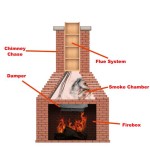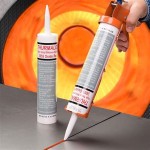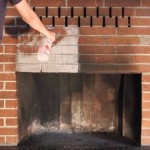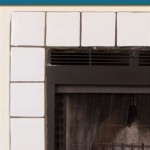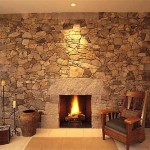Installing a Wood Stove in a Fireplace: A Comprehensive Guide
Installing a wood stove within an existing fireplace is a common and efficient method of enhancing home heating while maintaining the aesthetic appeal of a traditional hearth. This approach offers improved heating efficiency compared to open fireplaces, reduces the risk of chimney fires, and provides a more controlled combustion process. However, a successful installation requires careful planning, adherence to safety regulations, and a thorough understanding of the technical aspects involved. This article provides a comprehensive overview of the process, outlining crucial considerations and steps for installing a wood stove in a fireplace.
Before proceeding with any installation, a thorough assessment of the existing fireplace is paramount. This assessment should encompass several key areas, including the structural integrity of the fireplace, the condition of the chimney flue, and the clearances to combustible materials. Any deficiencies identified during this assessment must be addressed before commencing the wood stove installation. Neglecting this crucial step can lead to dangerous situations, including fire hazards and carbon monoxide poisoning.
Key Point 1: Fireplace and Chimney Inspection and Preparation
The fireplace itself should be inspected for cracks, crumbling mortar, and any signs of structural damage. If significant damage is present, a qualified mason should be consulted to perform the necessary repairs. A structurally sound fireplace is essential to safely contain the heat generated by the wood stove. Additionally, the hearth extension, the non-combustible area in front of the fireplace opening, must meet minimum size requirements as stipulated by local building codes and the wood stove manufacturer's specifications. Insufficient hearth extension can lead to sparks or embers igniting nearby flooring or carpeting.
The chimney flue is arguably the most critical component to inspect. A clean and unobstructed flue is vital for proper venting of combustion gases and prevention of chimney fires. Creosote, a flammable byproduct of wood combustion, accumulates within the flue over time. A buildup of creosote can significantly increase the risk of a chimney fire. Therefore, a professional chimney sweep should be hired to thoroughly clean and inspect the flue prior to installation. The chimney sweep can also assess the flue's condition and identify any cracks, breaches, or blockages that require repair.
In many cases, the existing fireplace flue may be too large for optimal wood stove performance. An oversized flue can lead to poor draft, resulting in smoky fires and inefficient heating. To remedy this, a stainless steel flue liner should be installed. The liner should be sized appropriately for the wood stove's flue collar diameter, as specified by the manufacturer. The liner effectively creates a properly sized flue, ensuring efficient venting and improved combustion. The installation of a flue liner is often mandated by local building codes and is crucial for safe and efficient wood stove operation.
Once the fireplace and chimney have been inspected and prepared, the next step involves selecting an appropriate wood stove. The choice of wood stove will depend on factors such as the size of the area to be heated, the desired heating output, and personal preferences. It is important to consult with a qualified wood stove retailer or installer to determine the optimal wood stove for the specific application.
Key Point 2: Wood Stove Selection and Placement
Wood stoves are rated by their heating capacity, typically measured in British Thermal Units (BTUs). The required BTU output will depend on the size and insulation of the space to be heated. A larger, poorly insulated room will require a wood stove with a higher BTU rating than a smaller, well-insulated room. Over sizing a wood stove can lead to overheating and inefficient operation, while under sizing will result in insufficient heating. Selecting a wood stove with the appropriate BTU rating is crucial for achieving optimal comfort and efficiency.
The size and design of the wood stove must also be considered in relation to the dimensions of the fireplace opening. The wood stove should fit comfortably within the fireplace without being overly cramped. Sufficient clearance around the stove is essential for proper ventilation and to prevent overheating of the surrounding fireplace structure. The manufacturer's installation instructions will specify the minimum clearance requirements, which must be strictly adhered to.
The placement of the wood stove within the fireplace is also important. The stove should be positioned in a way that maximizes heat radiation into the room. Ideally, the stove should be placed as close to the front of the fireplace opening as possible, while still maintaining adequate clearance to combustible materials. The stove should also be level and stable to ensure safe and efficient operation. In some cases, a non-combustible platform or hearth pad may be required to provide additional protection for the flooring beneath the stove.
After the wood stove has been selected and properly positioned, the next step involves connecting the stove to the chimney flue. This connection is typically made using stove pipe, a single-wall or double-wall metal pipe designed for high-temperature applications. The stove pipe connects the wood stove's flue collar to the chimney flue liner.
Key Point 3: Stove Pipe Connection and Safety Considerations
The stove pipe must be properly sized and installed to ensure a tight and secure connection. The diameter of the stove pipe should match the diameter of the wood stove's flue collar and the chimney flue liner. The stove pipe sections should be joined together with the crimped end facing down towards the stove, allowing creosote to flow back into the stove rather than leaking onto the floor. All stove pipe joints should be secured with screws to prevent them from separating.
The length and configuration of the stove pipe run are also important considerations. The stove pipe should be as short and straight as possible to minimize resistance to airflow and maximize draft. Sharp bends or long horizontal runs can impede draft and lead to smoky fires. The manufacturer's installation instructions will specify the maximum allowable length and the minimum slope for the stove pipe run. In some cases, a barometric damper may be required to regulate draft and prevent over firing of the wood stove.
Proper ventilation is essential for safe wood stove operation. Carbon monoxide, a colorless and odorless gas, is a byproduct of incomplete combustion and can be deadly. A carbon monoxide detector should be installed in the room where the wood stove is located to provide early warning of dangerous gas levels. The detector should be installed according to the manufacturer's instructions and tested regularly. Additionally, it is important to ensure adequate ventilation in the room by opening a window or using a ventilation fan. This helps to prevent the buildup of carbon monoxide and other harmful gases.
Once the wood stove is installed and connected to the chimney, a test burn should be performed to verify proper operation. During the test burn, the draft should be checked to ensure that the stove is venting properly. There should be no smoke leaking from the stove or the stove pipe connections. The stove's temperature should also be monitored to ensure that it is not overheating. If any problems are observed during the test burn, they should be addressed immediately. A qualified wood stove installer or chimney sweep can provide assistance with troubleshooting and resolving any issues.
Finally, it is crucial to adhere to all manufacturer's instructions and local building codes throughout the installation process. Building codes vary from location to location and may specify requirements for hearth extensions, clearance to combustible materials, chimney flue liners, and other aspects of wood stove installation. Failure to comply with these regulations can result in fines or even the forced removal of the wood stove. It is always best to consult with a local building inspector or a qualified wood stove installer to ensure that the installation meets all applicable requirements.
Installing a wood stove in a fireplace is a complex undertaking that requires careful planning, attention to detail, and adherence to safety regulations. By following the steps outlined in this article and consulting with qualified professionals, homeowners can safely and efficiently enhance their home heating while enjoying the warmth and ambiance of a wood-burning fire.

Can You Install A Wood Stove In Fireplace Direct Stoves

Choosing And Installing Our Wood Burning Stove Salt Rook

Can You Install A Wood Stove In Fireplace Direct Stoves

Can You Install A Wood Stove In Fireplace Direct Stoves

Wood Stove Installation The Ultimate Diy Companion 2024

Converting A Fireplace To Wood Burning Stove Chesneys

Your Guide To Wood Stove Installation Full Service Chimney

Can You Install A Wood Stove In Fireplace Direct Stoves

Have A Pro Install Wood Stoves Greenville Sc Blue Sky Chimney

New Wood Burning Prefab Fireplaces Complete Fireplace Installs
Related Posts

